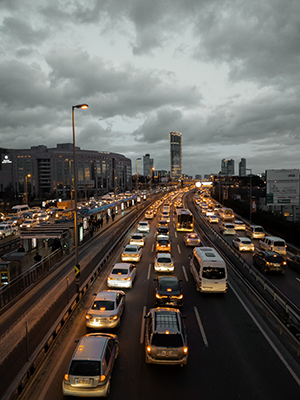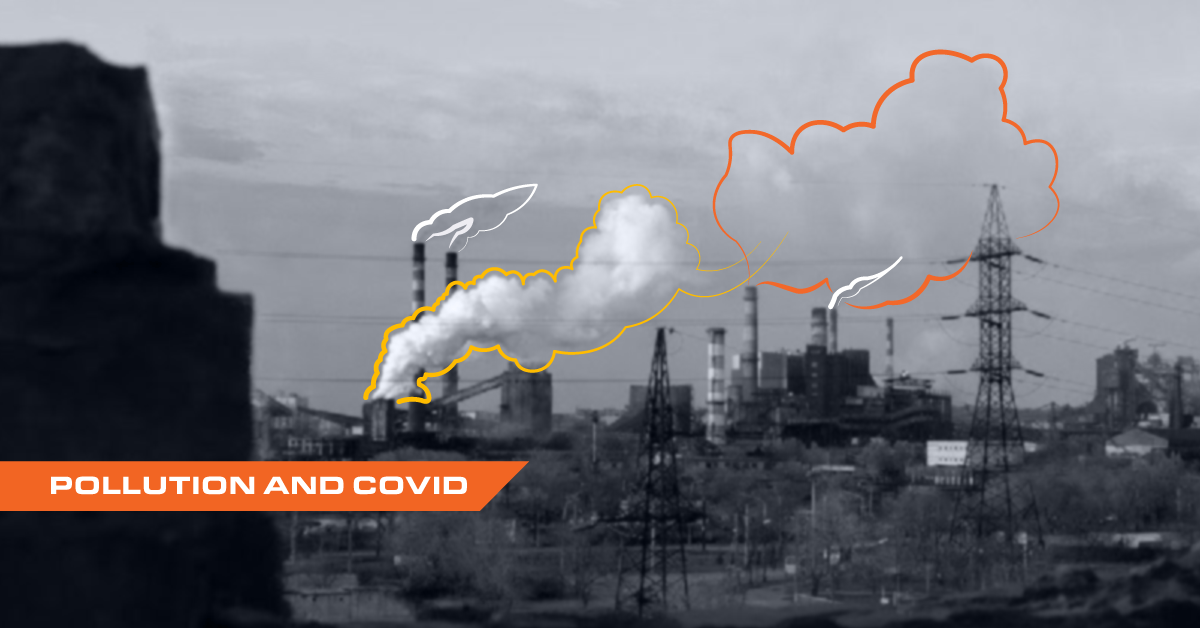highlighting the need for efficient transportation
While much is still unknown about COVID-19, evidence is stacking up that indicates air pollution is worsening the disease’s effects.
- The Hill reported earlier this month on an IOP study that found an increase in the concentration of multiple pollutants from a class known as hazardous air pollutants (HAPs) was associated with a 9 percent increase in COVID-19 mortality. The study also linked diesel exhaust, soot and smog, as well as substances known as naphthalene and acetaldehyde on their own, to increased coronavirus mortality rates.
- In studying South Asia, the World Bank found that outdoor air pollutants led to greater respiratory ailments, ailments which the coronavirus is known to exploit. With asthma and chronic lung disease among the worst underlying health conditions to have with COVID-19, the World Bank is clear in conveying the danger of pollutants:
“Researchers around the world suggest that air pollution has significantly worsened the impact of COVID-19 and may have led to more deaths than if pollution-free skies were the norm,” the Bank writes.
- This trend holds in the United States, too. At the Harvard University T.H. Chan School of Public Health, researchers find that “people with COVID-19 who live in U.S. regions with high levels of air pollution are more likely to die from the disease than people who live in less polluted areas.”
Adjusting for population sizes and healthcare capacity, the study found that those who live in more polluted counties “will be the ones that have higher numbers of hospitalizations [and] higher numbers of deaths.”
Coronavirus aside, outdoor air pollution exposure kills 4.2 million people a year, according to the World Health Organization.
The Environmental Protection Agency’s air quality standards rate safe levels of air quality by measuring PM, or particulate matter. For PM2.5, which refers to PM with a diameter of less than 2.5 micrometers, the current annual standard is 12 micrograms PM2.5 per cubic meter. Some places are better at hitting that mark than others.
Midtown Manhattan has an average level of 14.2 micrograms. Furthermore, in Maryland and the Washington, D.C. region, the Air Quality Index has reached “unhealthy” levels at several points during recent summers according to Maryland’s own Department of the Environment.

Even if one does not live within a city’s boundaries, though, pollution from city infrastructure can still be harmful. In a study of the Baltimore Metropolitan area, industries in the city certainly caused major pollution, but so too did vehicles “transiting major highways I-695 and I-95.” For employees in the Baltimore/Washington area, these roads are a hallmark of the daily commute. This commute, however, is having an adverse effect on the hundreds of thousands of families living along the corridor.
So what are we to make of this information?
While it has been repeated over the years, this data further reinforces the need to move away from large, air-polluting emissions sources, especially in densely populated areas.
Observing a recent temporary drop in emissions as workers stayed home due to COVID-19, the National Bureau of Economic Research “calculated that the reduction in pollution has led to about 360 fewer deaths each month in the United States from illnesses like asthma, lung disease, and heart disease — a drop of about 25 percent.” While noting that this does not make up for the well over 200,000 lives lost from the coronavirus, this does point to positive changes that can be made at a larger scale following the eventual end of the pandemic.
Already in Maryland, Governor Larry Hogan has used the recent reduction in traffic to gather data that could lead to promoting electric vehicles when the legislature meets next.
From electric vehicles to even more efficient solutions like SCMAGLEV, we must look to eco-friendly alternatives for public transportation and infrastructure in the future.
In countries like China or Japan, high speed and maglev trains are major components of recent and future investments in green infrastructure. These trains, as the Environmental and Energy Study Institute states, “would significantly reduce societal energy consumption and carbon emissions.”
To further the case for green infrastructure, scientists and the WHO stress that emissions must be kept down during the reopening process.
In the United States, more investment is required in high-capacity, energy efficient trains if we truly want to curb our carbon emissions. Along the Northeast Corridor, trafficked by millions each year, Northeast Maglev is promising to do just this.
Now more than ever, we need your help to make the project a reality. Be sure to sign our petition, and write letters to your legislators. Keep track of what we’re up to by following us on Facebook, Instagram and Twitter.
